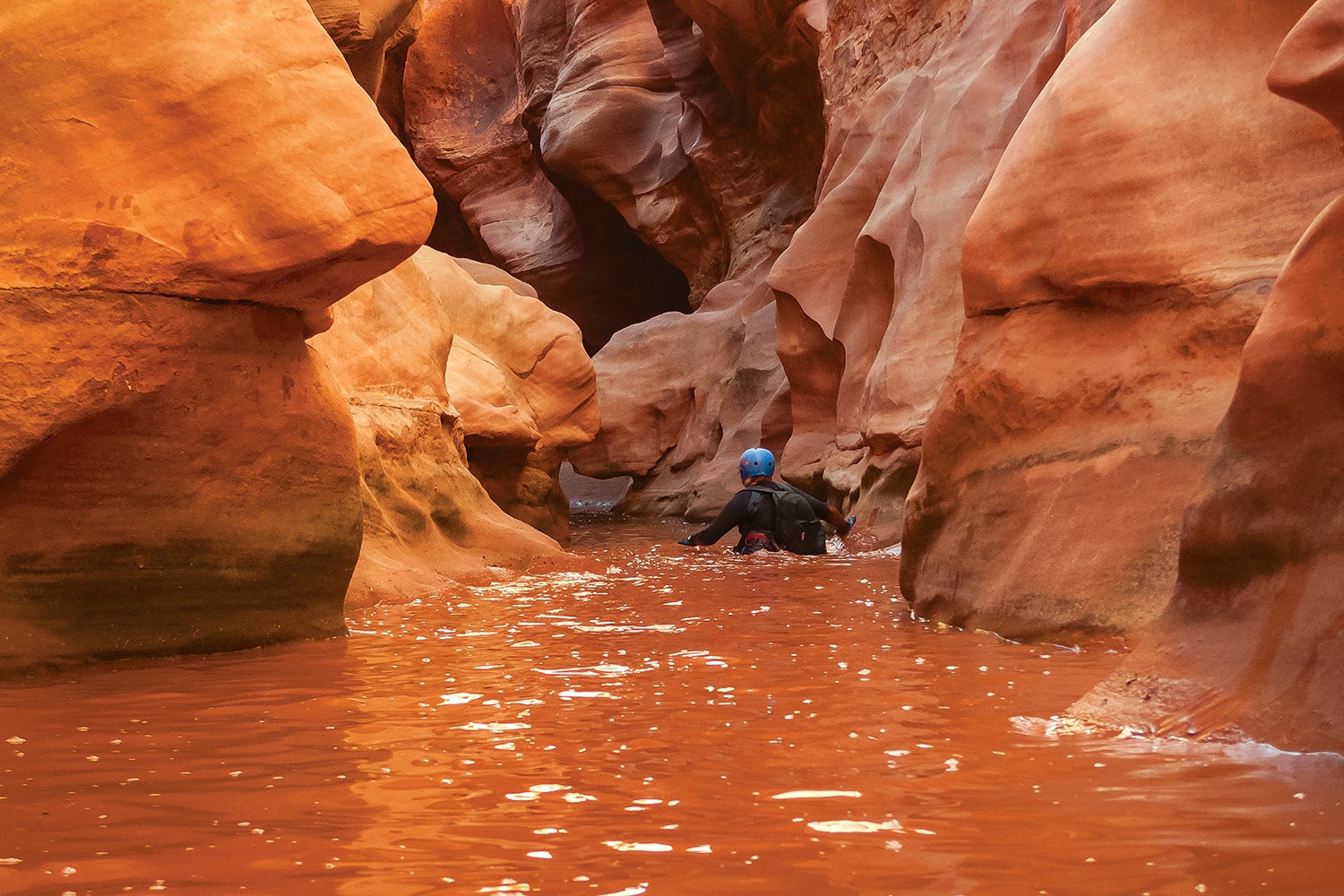Braving the Black Hole of White Canyon

'Photo by Dan Ransom'
We laughed at the sign, even though it predicted danger ahead. WARNING: DO NOT ATTEMPT THE BLACK HOLE DESCENT. The fine print explained that due to flash flood debris, “safe retreat or rescue may not be possible.”
The sign is here because, while there are many hazardous places in the wild, this particular spot in southern Utah is proven deadly. You can get in over your head in a hurry and more than a few have. In 1996, a flash flood careened through the narrows, killing a teenage girl. In 2003, another left a logjam in the middle of the slot, making the canyon nearly impassable. The Bureau of Land Management erected the sign shortly after—and left it there even after another flood washed away the debris in 2006.
Indeed, mishaps in this slot canyon—part of the larger White Canyon, which splinters southwest toward Lake Powell—generate more search-and-rescue calls than anywhere else in the area.
The Black Hole is about 5 miles long, up to 500 feet deep, and as skinny as 10 feet across at points. In “normal” conditions, you have to swim through most of its belly. Even for a slot canyon—they all change with weather and time—it’s a particularly variable experience. That means that we can’t trust what we read online about the Black Hole, no matter how recent the last trip report. It can be a lazy river where you bob through a redrock cathedral, or it can be a death trap with mandatory rappels and keeper holes (pools of water with nothing but featureless slickrock on all sides, giving you no easy way to clamber out).
But that’s the allure here and with all slot canyons. There’s something beautifully and brazenly primal about walking into hazardous terrain. For the well-prepared, that’s fun.
My group of three wanted to visit it for a good time, of course, but it was more than that: The Black Hole is part of the highly contentious 1.4-million-acre Bears Ears National Monument, which former President Obama established last December. In the current political climate, however, the future of its protection seems uncertain. [Editor’s Note: On December 4, 2017, President Donald Trump stripped national monument protections from 85% of Bears Ears. The Black Hole is outside of the new monuments’ boundaries.]
It was a clear October day when we pulled up to the trailhead, and we ventured in without expectations. There had been no recent rain here or upstream, but if it looked dangerous or if any of the three of us had any reservations, we planned to turn back. So with one last nod at one another, we waded into the sinuous Black Hole.
Right away, we glimpsed just how apocalyptic this place can be. At least 50 feet above us, the massive, desiccated trunk of a cottonwood was lodged between walls of redrock. Whenever we had to scramble over piles of sticks and boulders that choked the passage, I felt my adrenaline rise, as though each one was a checkpoint I’d successfully passed.
And then we reached the spot in the Black Hole where swimming through the 70°F water is required. It’s the scariest section, but also the prettiest. The wavy walls are so close in places that you can reach out and nearly
touch both sides.
We paddled downstream through the reddish water, using our waterproof packs as kickboards and twisting around each bend with anticipation. The Black Hole seemed to swallow us whole, but we didn’t mind.
When the natural fun-house ride ended and we were hiking the 2 miles back on dry land, talking felt inappropriate. We didn’t break the silence until, at the car, we cracked open beers and toasted our trip through the underworld. No one denied that we were lucky to have had perfect conditions and an easy passage, but we agreed that the BLM should put up a new sign: “WARNING, YOU MUST BE WELL-PREPARED TO SWIM THE BLACK HOLE.”
And the fine print might say, “But it will change your life.”
DO IT
You need at least five hours to travel the Black Hole. The approach is negligible, but there’s a 2-mile road walk at the end if you don’t leave a shuttle car.
Trailhead 37.797526, -110.304644; 57 miles south of Hanksville on UT 95. (Look for the parking lot at mile marker 57.) Guide North Wash Outfitters in Blanding; tours start at $145/person